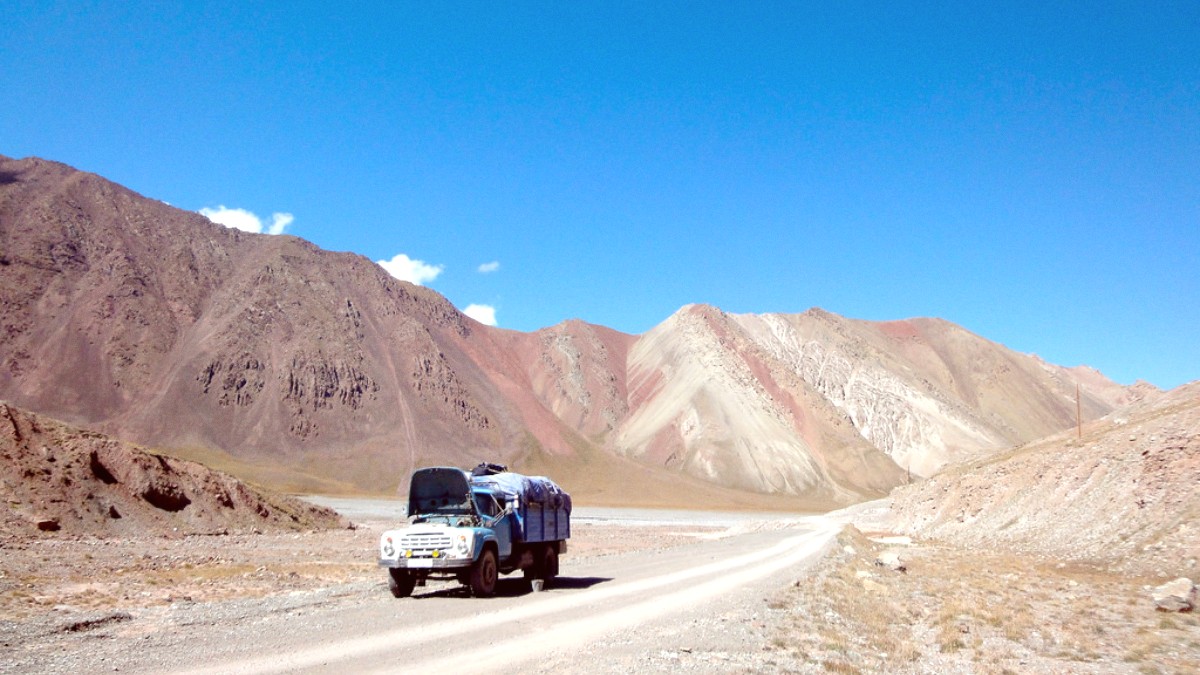
Tajikistan
The highway itself is the main attraction, an experience in motion, with every turn displaying a new panorama.
Local homestay hosts or your driver often give informal guidance and context for these sites. For formal tours and tickets, explore options with GetYourGuide.
A Travel camera comes in handy for capturing the landscapes.
Ruins of an ancient fortress perched high above the valley, presenting incredible panoramic views.
Another ancient fortress in the Wakhan, giving historical context to the valley's strategic importance.
Remains of 4th-7th century Buddhist stupas carved into a hillside, indicating a pre-Islamic past.
Found in villages throughout GBAO, characterized by unique architecture and central skylight, embodying the Pamiri way of life.
Natural hot springs considered sacred, with separate bathing areas.
The Pamir Highway is defined by its dramatic natural beauty, from towering peaks to serene alpine lakes.
The second-highest botanical garden in the world, perched on a hill overlooking Khorog, presenting stunning views and various plant life.
The Roof of the World, presenting an unparalleled sense of elevation and vastness.
A high-altitude, saline lake with striking blue waters, surrounded by barren mountains, creating a surreal landscape.
Scenic twin lakes known for their distinct colors, presenting serene environments for reflection and photography.
Dramatic gorges, fertile valleys, and stunning views of the Hindu Kush mountain range and Afghan villages across the Panj River.
The region is part of the Pamir National Park. Wildlife includes Marco Polo sheep, ibex, marmots, and various bird species. Spotting snow leopards is extremely rare.
For those seeking to venture beyond the main highlights, the Pamir Highway presents several off-the-beaten-path experiences.
Pshart Valley / Jizev Valley: Accessible via challenging treks, these valleys present incredibly remote villages, pristine nature, and deep cultural immersion.
The Pamir Highway presents endless unique photo opportunities: the stark contrast of lush valleys with barren mountains, the resilient faces of locals, and traditional Pamiri homes.
There is increasing interest in combining the Pamir Highway with visits to Afghanistan, notably via the Ishkashim border market (when open and security permits).
Beyond the well-trodden path, the Pamir Highway holds secrets for those willing to explore .
Discovering these less-visited spots gives a more intimate encounter with the region's raw beauty and authentic local life.
A less known viewpoint in the Wakhan Valley, presenting a different perspective of the surrounding peaks and the Afghan border.
Remnants of Soviet infrastructure, including old bridges and abandoned military outposts, are visible along sections of the highway, specifically in the eastern Pamir.
Various passes like Kargush Pass and Khargush Pass present their own unique panoramic views and a sense of accomplishment.
The landscape displays high-altitude deserts, vast plateaus, snow-capped peaks, and deep river valleys, all shaped by immense geological forces.
High season (July-August) has the best weather but more travelers. Shoulder seasons (May-June, Sept-Oct) present fewer tourists and pleasant conditions.
Consider a flexible itinerary. Road conditions can cause delays. Build in extra time for unexpected stops and photo opportunities.
Many attractions involve walking or short hikes. Wear comfortable, sturdy shoes. Bring layers for changing mountain weather.
Websites and travel blogs specializing in Central Asia or the Pamir Highway are good for trip planning.
CaravanistanThese individuals often know the most up-to-date information on road conditions, local events, and hidden spots.
Offline maps like Maps.me come in handy for navigation and locating points of interest, especially where internet is unavailable.
Download Maps.meKhorog has tourist information points that can offer maps and advice.
Maintain flexibility in your schedule to adapt to changing conditions or to spend more time at a captivating site.
Cultural sensitivity enhances your visit and local interactions.
Engaging with locals often opens doors to unexpected experiences and viewpoints not found in guidebooks.
Their stories and knowledge add significant depth to your journey.
The region surrounding the Pamir Highway presents further opportunities for exploration, for those with more time or specific interests.
West of Dushanbe, the Fann Mountains are a trekker's paradise with stunning alpine lakes and rugged peaks, a popular destination for serious hikers.
A challenging but rewarding detour off the main highway, known for its extreme remoteness, traditional villages, and majestic landscapes.
This UNESCO World Heritage site covers much of the Pamir Mountains, protecting a vast area of glaciers, high-altitude lakes, and unique wildlife.
Entry permits may be needed for certain areas within the park.
These northern cities offer historical Silk Road sites, ancient ruins, and bazaars, presenting a different cultural experience from the Pamirs.
Connects well for multi-region trips within Tajikistan.
While security situations vary, opportunities exist to visit small Afghan villages across the Panj River from the Wakhan Valley.
Requires a very informed and cautious approach.
Learn about the Silk Road's influence on the region.
Explore books on the unique Ismaili traditions and Pamiri way of life.
Gain inspiration from other travelers' experiences along the Pamir Highway.